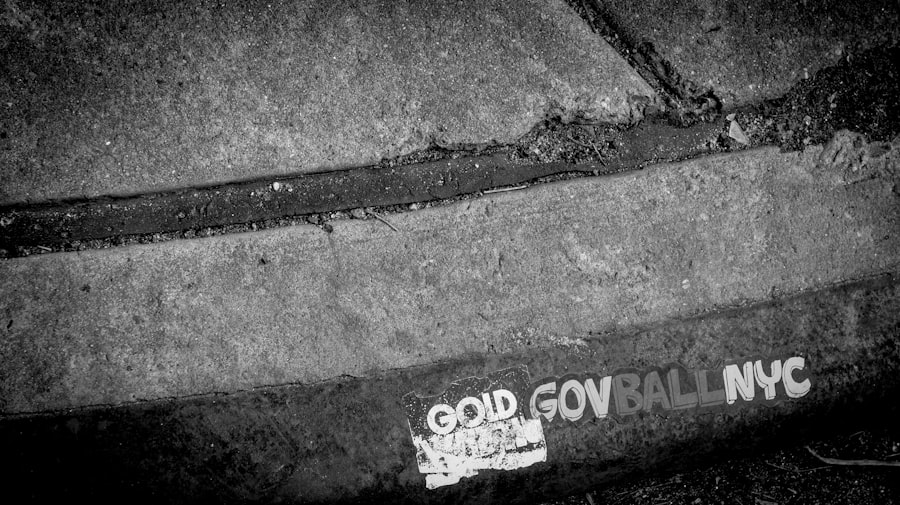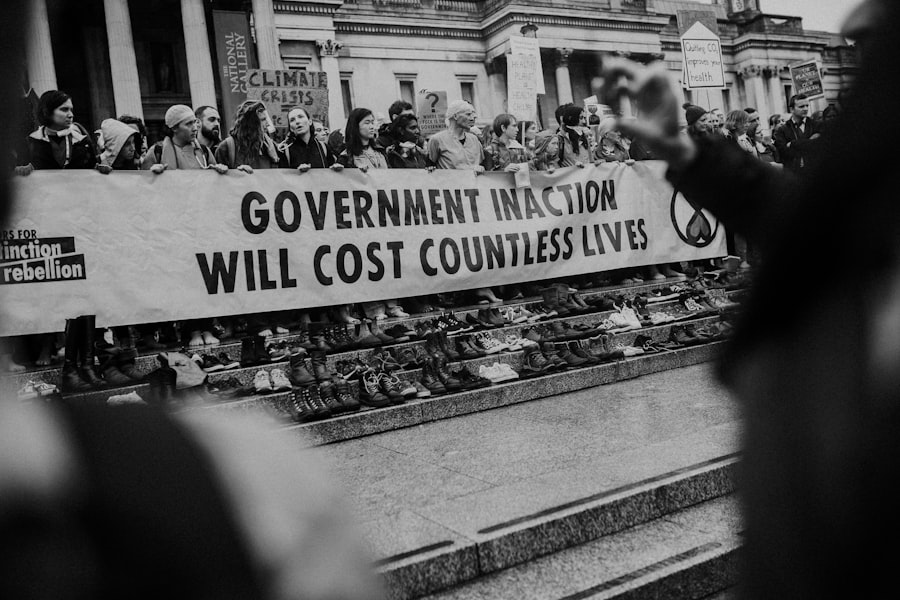Government controlled assets are a significant aspect of public administration and economic management. These assets, which can range from natural resources to infrastructure, are owned and managed by government entities at various levels. Understanding the nature and implications of these assets is crucial for citizens, policymakers, and economists alike.
As you delve into this topic, you will discover how government control over certain assets can shape economic landscapes, influence public policy, and affect the daily lives of individuals. The rationale behind government control of assets often stems from the belief that certain resources or services are best managed by the state for the benefit of society as a whole. This perspective is rooted in the idea that some assets are too vital to be left solely in the hands of private entities, which may prioritize profit over public welfare.
As you explore the various dimensions of government controlled assets, you will gain insights into their types, management, and the broader implications for society and the economy.
Key Takeaways
- Government controlled assets refer to resources and properties owned and managed by the government for the benefit of the public.
- Types of government controlled assets include natural resources, infrastructure, public utilities, and state-owned enterprises.
- Reasons for government control of assets include ensuring public welfare, economic stability, national security, and strategic development.
- Challenges of government controlled assets include inefficiency, bureaucracy, and potential for corruption, while benefits include public access, regulation, and stability.
- Examples of government controlled assets include national parks, public transportation systems, and state-owned banks.
Types of Government Controlled Assets
Government controlled assets can be categorized into several types, each serving distinct purposes and functions. One prominent category includes natural resources such as oil, gas, minerals, and forests. These resources are often deemed essential for national security and economic stability, leading governments to assert control over their extraction and management.
By doing so, governments can regulate production levels, ensure sustainable practices, and generate revenue that can be reinvested into public services. Another significant type of government controlled asset is infrastructure. This encompasses transportation systems like roads, bridges, and railways, as well as utilities such as water supply and electricity.
The rationale for government ownership in this sector is clear: infrastructure is foundational to economic activity and public welfare. When you consider how vital these services are for daily life, it becomes evident that government control can help ensure equitable access and maintenance standards that might not be prioritized by private companies.
Reasons for Government Control of Assets

There are several compelling reasons why governments choose to control certain assets. One primary motivation is the pursuit of social equity. By managing resources and services directly, governments can work to ensure that all citizens have access to essential goods and services, regardless of their economic status.
This approach aims to reduce disparities and promote a more inclusive society where everyone has the opportunity to thrive. Additionally, government control can serve to stabilize markets and protect national interests. For instance, during times of economic uncertainty or crisis, government intervention in key sectors can prevent monopolistic practices and price gouging that might occur in a purely private market.
By maintaining control over critical assets, governments can implement policies that safeguard the economy and protect consumers from exploitation.
Challenges and Benefits of Government Controlled Assets
| Challenges | Benefits |
|---|---|
| Lack of efficiency | Government control can ensure stability |
| Political interference | Public interest can be prioritized |
| Corruption and mismanagement | Resource allocation can be more equitable |
| Slow decision-making process | Long-term planning and investment can be facilitated |
While there are clear benefits to government controlled assets, there are also significant challenges that must be navigated. One major challenge is inefficiency. Government entities may not always operate with the same level of efficiency or innovation as private companies due to bureaucratic processes and a lack of competition.
This can lead to underperformance in service delivery or resource management, ultimately affecting the quality of life for citizens. On the other hand, the benefits of government controlled assets can be substantial. For instance, when managed effectively, these assets can generate significant revenue for public coffers, which can then be reinvested into essential services such as education, healthcare, and infrastructure development.
Furthermore, government control can ensure that environmental standards are upheld, promoting sustainable practices that benefit future generations. As you reflect on these challenges and benefits, consider how they impact your community and the broader society.
Examples of Government Controlled Assets
There are numerous examples of government controlled assets around the world that illustrate the diverse nature of this concept. In many countries, national oil companies serve as prime examples of state control over natural resources. These entities manage oil extraction and production while ensuring that profits are directed toward national development goals.
Countries like Saudi Arabia and Venezuela have built their economies around such state-owned enterprises. Infrastructure is another area rich with examples of government controlled assets. Public transportation systems in cities like New York or London are managed by government agencies that prioritize accessibility and affordability for residents.
These systems not only facilitate daily commutes but also contribute to reducing traffic congestion and environmental impact. As you consider these examples, think about how they shape your own experiences with public services and resources.
Management and Oversight of Government Controlled Assets

Effective management and oversight of government controlled assets are crucial for ensuring their success and sustainability. Governments typically establish regulatory bodies or agencies tasked with overseeing these assets to ensure they are managed efficiently and transparently. These entities often set guidelines for operations, monitor performance metrics, and enforce compliance with environmental regulations.
Public accountability is another essential aspect of managing government controlled assets. Citizens have a right to know how these assets are being utilized and how revenues are being spent. Transparency initiatives, such as public reporting and community engagement efforts, can help build trust between governments and citizens.
As you think about the management of these assets, consider how transparency and accountability could enhance public confidence in government operations.
Impact of Government Controlled Assets on the Economy
The impact of government controlled assets on the economy is profound and multifaceted. On one hand, these assets can serve as engines of economic growth by generating revenue through taxation or direct profits from operations. This revenue can then be reinvested into public services or infrastructure projects that further stimulate economic activity.
Conversely, mismanagement or inefficiency in handling these assets can lead to economic stagnation or decline.
As you reflect on this dynamic, consider how the management of government controlled assets directly influences your local economy and job market.
Public Perception and Opinion on Government Controlled Assets
Public perception of government controlled assets varies widely based on individual experiences and political beliefs. Some citizens view these assets as essential tools for promoting social equity and ensuring access to vital services. They believe that government ownership can lead to better outcomes for society as a whole by prioritizing public welfare over profit motives.
However, others may harbor skepticism about government control due to concerns about inefficiency or corruption. Instances of mismanagement or scandals involving state-owned enterprises can erode public trust and lead to calls for privatization or reform. As you consider these differing perspectives, think about how your own views on government controlled assets have been shaped by personal experiences or broader societal narratives.
Future Trends and Developments in Government Controlled Assets
As we look toward the future, several trends are emerging in the realm of government controlled assets. One notable trend is the increasing emphasis on sustainability and environmental stewardship. Governments around the world are recognizing the importance of managing natural resources responsibly to combat climate change and preserve ecosystems for future generations.
Additionally, advancements in technology are transforming how governments manage these assets. Data analytics, artificial intelligence, and blockchain technology offer new opportunities for improving efficiency, transparency, and accountability in asset management. As you contemplate these developments, consider how they might reshape the landscape of government controlled assets in your community.
Comparisons with Privately Controlled Assets
When comparing government controlled assets with privately controlled ones, several key differences emerge. Private entities often operate with a profit motive that drives innovation and efficiency; however, this focus can sometimes come at the expense of social responsibility or equitable access to services. In contrast, government controlled assets prioritize public welfare but may struggle with bureaucratic inefficiencies.
The balance between these two approaches is a topic of ongoing debate among economists and policymakers. Some advocate for a mixed model where both public and private sectors collaborate to optimize resource management while ensuring equitable access for all citizens.
Conclusion and Recommendations for Government Controlled Assets
In conclusion, government controlled assets play a vital role in shaping economic landscapes and influencing public welfare. While there are challenges associated with their management, the potential benefits—such as social equity, revenue generation, and sustainable practices—are significant. To enhance the effectiveness of government controlled assets, it is essential for policymakers to prioritize transparency, accountability, and efficiency in their management.
As you consider the future of government controlled assets, it may be beneficial to advocate for reforms that promote collaboration between public entities and private enterprises while ensuring that public interests remain at the forefront. By fostering an environment where both sectors can work together effectively, you can contribute to a more equitable and sustainable future for all citizens.
In exploring the topic of government-controlled assets, it’s essential to consider the broader implications of such control on societal structures and individual freedoms. A related article that delves into these themes can be found on Real Lore and Order, which provides insightful analysis on the intersection of governance and societal norms. For a deeper understanding, you can read more about these dynamics by visiting their sample page, where the discussion extends to various aspects of government influence and its impact on everyday life.
WATCH THIS! The 8 Assets You OWN But the Government CONTROLS (Dollar Collapse Survival)
FAQs
What assets does the government control?
The government controls a wide range of assets, including land, natural resources, infrastructure, and public enterprises.
Land
The government controls vast amounts of land, including national parks, military bases, and government buildings. This land is used for various purposes, such as conservation, defense, and public administration.
Natural Resources
The government also controls natural resources such as oil, gas, minerals, and water. These resources are often managed through regulatory agencies and used for public benefit.
Infrastructure
The government controls and maintains infrastructure such as roads, bridges, airports, and public transportation systems. These assets are essential for the functioning of society and the economy.
Public Enterprises
The government may also control and operate public enterprises, such as utilities, postal services, and public transportation companies. These entities provide essential services to the public and are often subject to government regulation.
